Lake Titicaca with its 3810 m.a.s.l. is one of the highest onshore lakes in South America, if not the world. Besides being the largest lake in South America (of freshwater) with its 3200 square miles of extension. In addition, it’s believed to be one of the twenty oldest lakes on earth with an age approaching millions of years old. It is so high, its characteristic deep blue color seems to blend in with the sky. And with a backdrop of different snow peaks around you, you will feel like you are in the clouds. Therefore, you may be wondering where is Lake Titicaca located. And that is why together with the experts from Machu Travel Peru we have prepared an article where we focus on this question. Besides to know its islands and everything about its geography.
Everything you need to know about where Lake Titicaca is located
- The Lake Titicaca
- Location
- History and mystery
- Peru side of the lake
- Bolivia side of the lake
- How to get to the Lake
- What to do and see in Lake
The Lake Titicaca
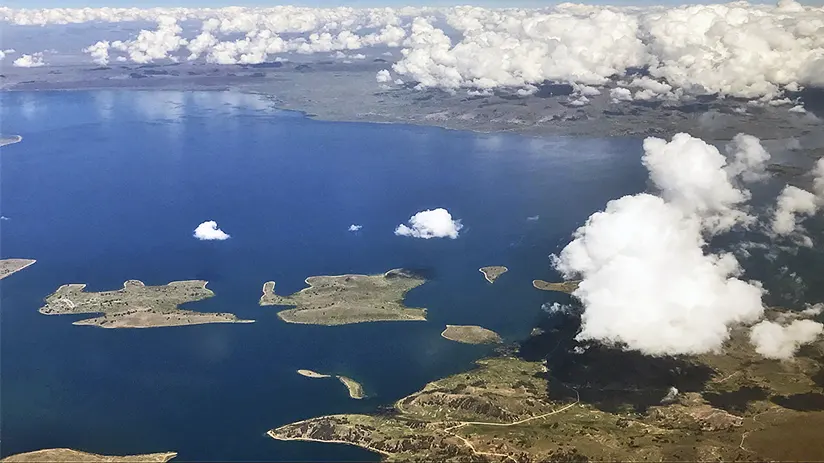
Lake Titicaca carries with honor the title of the highest navigable lake in the world. It is due to 12500 feet of altitude. So it is not surprising that it is one of the most popular attractions in South America. This natural wonder is characteristic of its deep blue waters inside 8710 square kilometers. And landscapes full of snow-capped mountains around it. And what country is Lake Titicaca located in? It is possible to visit the lake both on the shores of Bolivia and Peru. Although we always recommend doing it from the beautiful Peruvian city of Puno. From there you can get a great variety of tours around the different islands.
Also, if you have time, you can experience a cultural exchange with the families that live on the islands. The floating islands of Uros, Taquile, and Amantaní are some of the most important islands to visit. And within a Lake Titicaca tour, you can enjoy a complete tour of each of these. Or just visit a specific one. The decision is in your hands!
Location
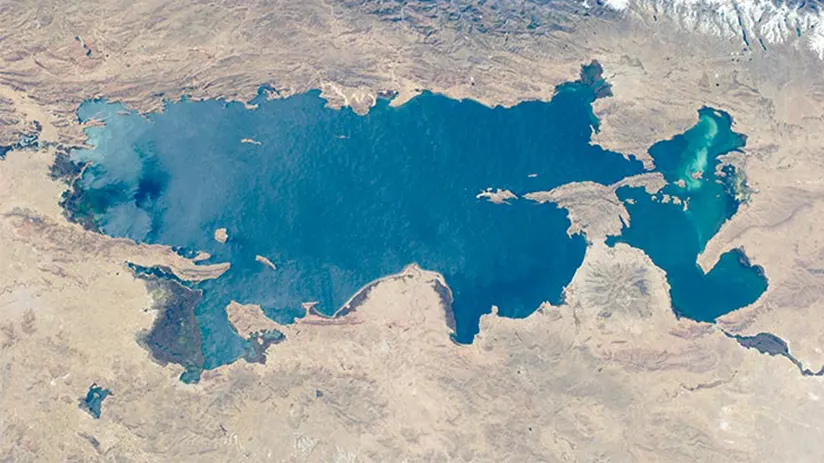
So, where is Lake Titicaca located? Lake Titicaca sits at an altitude of 12,500 feet (3,800 meters) above sea level and is considered one of the highest lakes in the world. It’s right between the borders of Peru’s southeast and Bolivia’s northwest. In fact, the lake functions as a natural border between the two countries. And this lake extends from northwest to southeast direction for a distance of 120 miles, which is about 190 kilometers and 80 km wide (50 miles). Although it must also be taken into account that a part of the lake has a narrow strait, called Tiquina. This strait “separates” the lake into two bodies of water. The smallest is found in the southeast of Bolivia and receives the name of Lago Huinaymarca while on the Peruvian side, it receives the name of Lago Pequeño.
To be more exact, it is located in the highlands, stretching north to Puno in Peru and south to Tiwanaku, Bolivia. If you were wondering about the meaning of Lake Titicaca, it means “Mount of the Puma”.
The lake occupies about 8710 square kilometers, of which 5260 are in Peru and 3450 in Bolivia. And how deep is Lake Titicaca in Peru? The maximum depth of the lake is 281 meters deep and its surface temperature is 55.4ºF, oscillating from 51.8ºF in winter to 59ºF in summer.
History and mystery
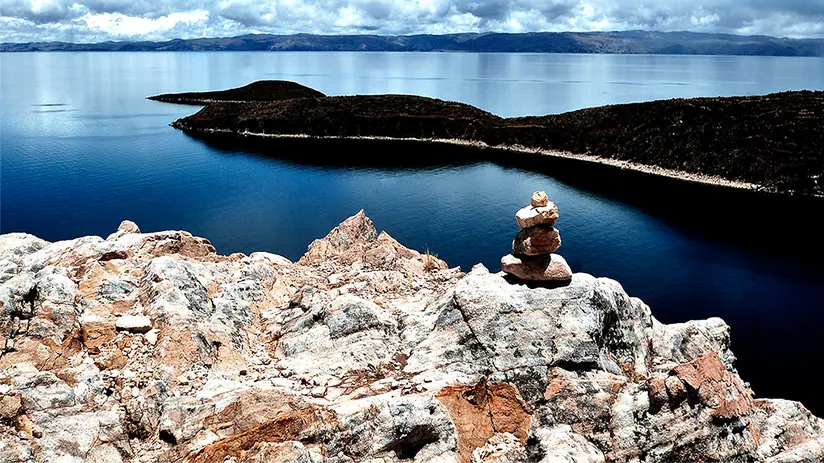
Lake Titicaca is believed to have formed about sixty million years ago. Before the Ice Age, a massive earthquake that shook the mountain range in this part of the Andes split it in two, thus forming a hole that filled with water from nearby melted glaciers, where is Lake Titicaca currently. In this form, the lake has been home to many ancient civilizations in South America. The Puraka civilization was the first one settled around 200 BC, and it was believed that it was a peaceful agricultural community. A thousand years later, the Tiwanaku culture emerged and spread to southern Bolivia. Later the Aymaras and the Collas emerged who currently inhabit the zone. Some relatives of these social groups immigrated to the northwest, founding Cusco, the future capital of the Incas empire.
And, what is special about Lake Titicaca? Being such a popular and recognized destination, you may have heard that the lake is surrounded by mystery, in addition to the beautiful Lake Titicaca islands. After doing a little research on where Lake Titicaca is located, discovering all the mysteries of this fascinating and mysterious part of Peru is one of the best things to do.
A. The legend
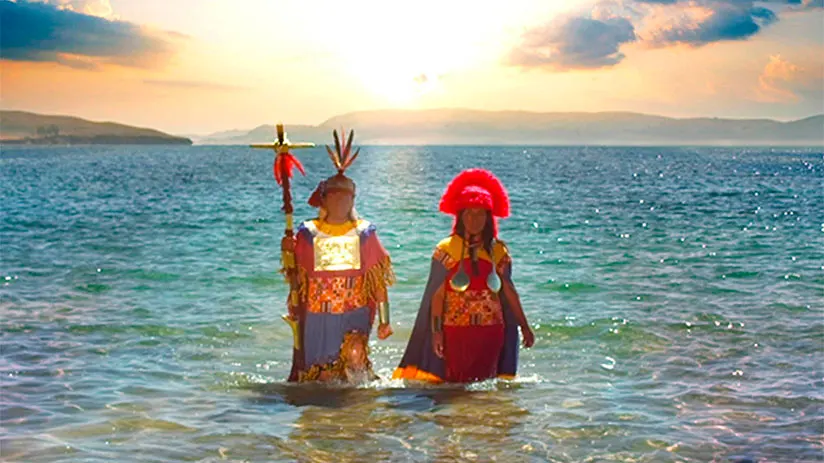
The myth says that at the beginning of the time, the Viracocha god (the doer of all) created men and put them in a fertile valley so that they would not lack shelter and food. It’s said that in those times there was no hatred, evil, revenge, or rancor. In this form, men lived pleasantly. They only had a restriction imposed by the same Viracocha, they could not climb up to the top of mountains (Apus) in search of the Holy Fire. However, curiosity and the influence of the Evil Spirit (Devil) that was already beginning to roam the earth, tempted them to break that rule and go up in search of the Holy Fire.
The Apus (Andean minor deities) notified Viracocha, who enraged, sent giant stone pumas to exterminate the man. In this sense, human carnage was unleashed. Time after, the Sun deity, upon seeing the disaster struck on earth, began to cry for 40 days, flooding the valley where is Lake Titicaca currently, and where the giant stone pumas were drowned. Fortunately, a couple, a man and a woman, survived the disaster. Coincidentally they were sons of the sun god. Their names were Manco Capac and Mama Ocllo, their father sent them to find new fertile lands away from the lake with a scepter. They had to sink it through the lands they passed. The place where the scepter sinks more easily will be the chosen one to found a new city, the city of Cusco.
Peru side of the lake
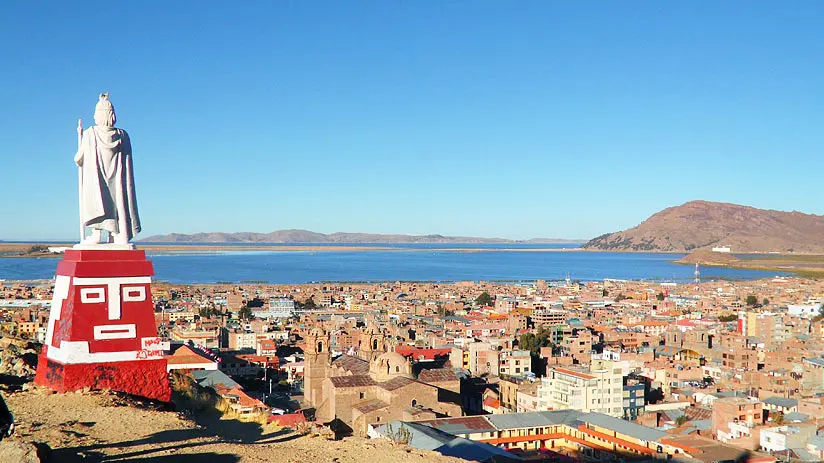
The closest city to Lake Titicaca is the Peruvian city of Puno. Practically, it is located over the northwest lake coast and is the folklore capital of Peru. Therefore, their local people practice many different forms of dance. Puno is also the starting point for tours to the lake and has many hotels to stay. The town has a charming square that has a colonial-style church. On the outskirts of Puno, also on the shores of Lake Titicaca, there are the Sillustani Towers. These funerary towers have an interesting history. In addition, every February, locals, and foreigners visiting Peru go to Puno for the Fiesta de la Virgen de Candelaria to see thousands of colorful dances and parades. If the hotels in Puno are not enough, there are also luxurious hotels in Lake Titicaca islands.
A. Peruvian lake islands
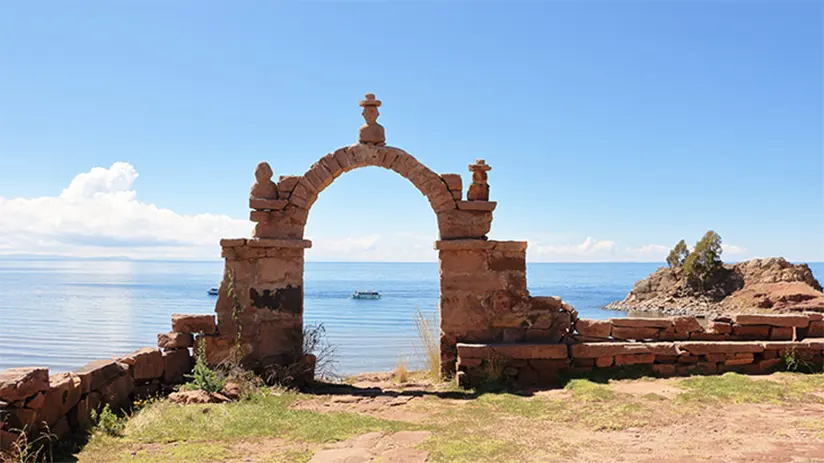
There are many important islands on the Peruvian side of Lake Titicaca. And the biggest tourist attraction is the Uros floating islands. These islands are made entirely of reeds that grow locally in the lake. The islands are inhabited by the Uros people who have lived here for hundreds of years floating adrift. A visit to the Uros Islands is special and silent since there is nothing like them on the planet.
See how people live their lives and amazingly, they are mostly self-sufficient. Tourism plays a large part in their lives and local people use tourism as a source of income. Further on the lake are also the rocky islands of Amantani and Taquile. Both islands have local communities that you can visit. No island has any type of transportation, so you will have to walk everywhere. Despite this, the islands have a charming and peaceful atmosphere.
Bolivia side of the lake
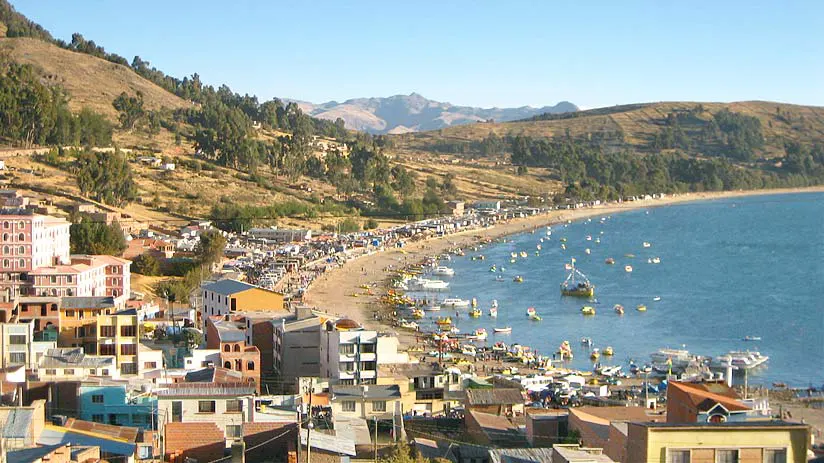
If the different boat tours around Puno are not your thing, the Bolivian side has different experiences to enjoy. On this side, Copacabana is the closest town where is Lake Titicaca currently. Also, it is the main city on the Bolivian shores. This charming little town is famous not only for being on the lake but also for its large white church that dominates the city. This religious building is devoted to Virgen Candelaria de Copacabana, almost as famous as the church. There are also some charming restaurants and you can take out paddle boats on the lake. By the way, if you are wondering if you can swim in Lake Titicaca, yes you can swim. Of course, only certain areas of the lake are suitable for swimming, such as the reserved beaches of the hotels and some restaurants that have lifeguards.
The climate in Copacabana is warm and sunny and it is a perfect place to spend a few days. Here is the starting point for tours to Isla del Sol and Isla de la Luna.
B. Bolivian lake island
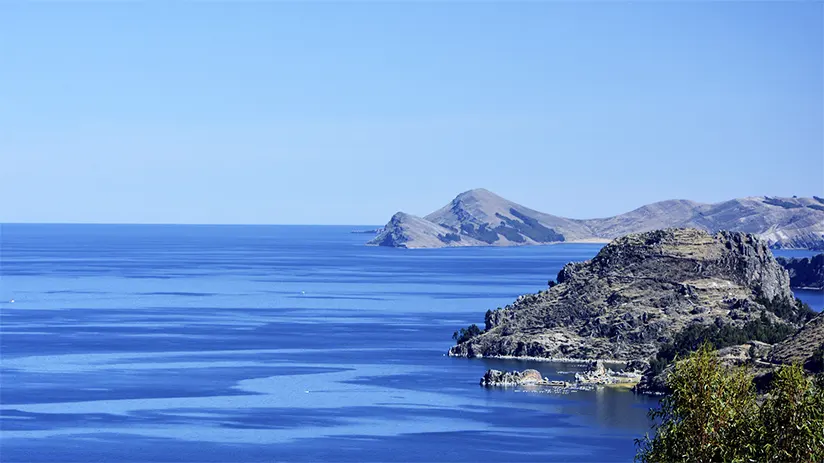
On the Bolivian side of the lake, there are two very special islands to visit, the Islands of the Sun and the Moon. These islands have a total of more than 180 Inca ruins, which makes them worth visiting. Besides Inca palaces and labyrinths. Remember that the Island of the Sun was the origin of Manco Capac and Mama Ocllo, founders of Cusco, the future capital of the Inca empire. Keep in mind also that there are no types of transportation, so you will have to explore the islands on foot. There is basic accommodation on the islands if you want to stay with a local family.
How to get to the lake?
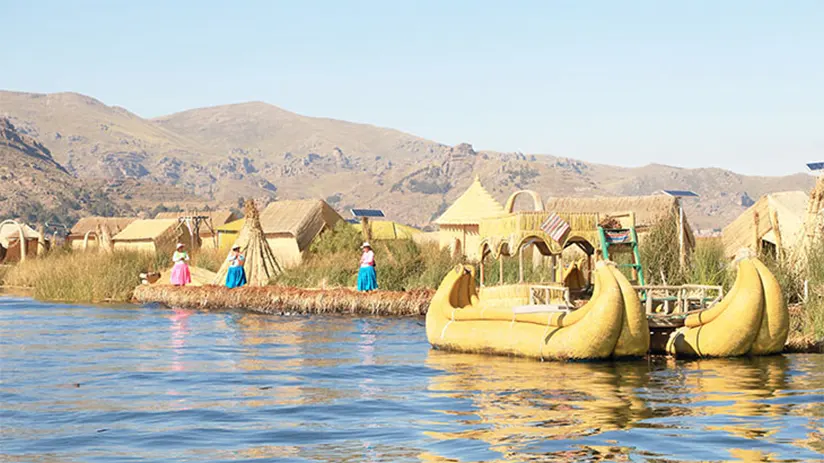
Where is Lake Titicaca? You may want to travel from Machu Picchu to Lake Titicaca and wonder how you will get there. Because you should already know that Lake Titicaca and Machu Picchu are in a single country called Peru. Therefore, if you want to visit Peru, Lake Titicaca is a beautiful area with easy access. You can choose to go by train, bus or by plane from Cusco or by plane and bus from Lima.
A. Lima – Puno
By Plane
Puno doesn’t have an airport. Therefore, all flights from Lima arrive at Juliaca airport. Juliaca is a Peruvian city very close to Puno, 1 hr of distance by car. The flight lasts 01:35 hrs and the frequency is inter-diary during the week, twice per day. The flight costs are around $90 round trip per person.
By Bus
If you opt for the bus, numerous companies range from luxurious to basic options. The frequency of the bus is diary the bus trip lasts 25 hours and you’ll pass by coast, Sierra, and Andean plateau. By the way, the bus arrives in the same Puno city. The bus ticket cost is $24, one way, per person.
B. Cusco – Puno
By Train: If you choose the luxurious train from Cusco, it usually takes about 10 hours but the scenery is spectacular. Pass the Andes mountain range with snow-capped mountains and small picturesque villages. The train carriages have deluxe cabins, restaurant services, and even tour guides onboard. The Luxury train service is called Andean Explorer of Peru Rail and the ticket for the train cost around $500, one way, per person.
By Bus
The bus trip takes about 6 hours from Cusco. These are diary and arrive in the same Puno city. The bus route runs at night and costs around $17 per person one way.
By Plane
The flights are three per week and last 40 minutes. In the same way, these arrive in Juliaca and from there, you’ll have to take transport to Puno (1 hour of car trip). The cost of a flight is $60, per person, one way.
C. From Bolivia
If you are asking where is Lake Titicaca in Bolivia. Well, we have to start by saying that the main entrance door to Bolivia is its international airport of La Paz. This is the most important Bolivian city and there are bus services heading to Copacabana every day. Copacabana is the Bolivian city closest to Lake Titicaca, similar to Puno, it is located on the Lake coasts. The bus trip lasts 3-5 hours of scenic trip and the bus ticket cost around $3 to $17, per person, one way.
What to do and see in Lake
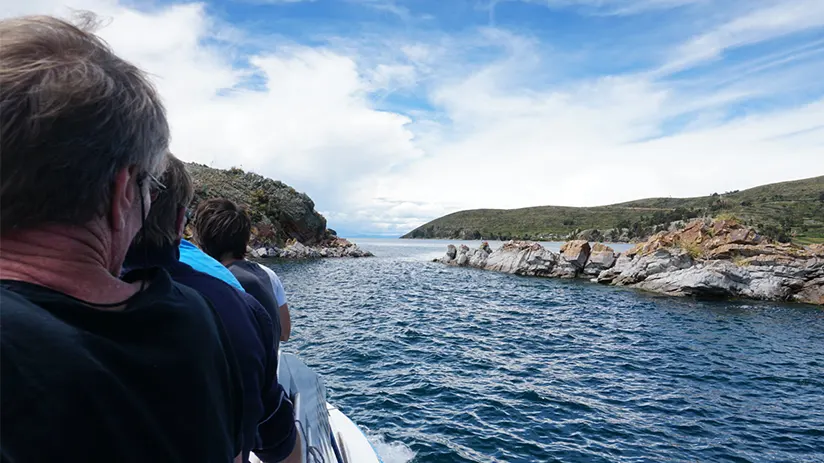
A. Visit the islands
You can visit the islands distributed in all lake zone, (Both in the Peruvian and Bolivian parts).
- Sun island – Isla del Sol (Bolivia)
- Moon Island – Isla de la Luna (Bolivia)
- Isla Amantani (Peru)
- Isla Taquile (Peru)
- Uros floating Islands (Peru)
B. Enjoy the festivities
Puno is well-known as the capital of Peruvian folklore, by its colorful festivities and its important Mamacha de La Candelaria festivity. Besides other quaint festivities developed around the lake.
- Mamacha de la Calendaria festivity: It is celebrated in Puno (Peru) and Copacabana (Bolivia) since 2 February of each year. It usually lasts 1 week and you’ll see colorful dancers, music, happiness, and smiles in every street of Puno Center.
- Feast of Saint James: This particular festivity is celebrated on Taquile Island (Peru).
- Saint Earth feast: It is celebrated on Isla Amantaní on the 3rd Tuesday in January of each year.
C. Practice sports inside and around the lake
Hiking bordering the lake, or over its coasts. Swimming and diving in some authorized areas of the lake (usually these are the private beaches of hotels and restaurants because these have to have lifeguard staff), paddle surfing, kayaking, and fishing among others are the activities that you can enjoy in your Lake Titicaca journey.
“A LAKE IS THE LANDSCAPE’S MOST BEAUTIFUL AND EXPRESSIVE FEATURE.”
As you can see, to answer where is Lake Titicaca located we have to take many things into account. Especially when the location of Lake Titicaca is related to many things. In addition, it cannot be denied that the geography of the lake adds a lot to the charm of the place. Being a lake between two nations, it is no wonder there is so much to discover and do. We hope we have been of help together with the experts from Machu Travel Peru. If you want to know more about our tours, you can consult with our advisors. They will be happy to help you organize the trip of your dreams.